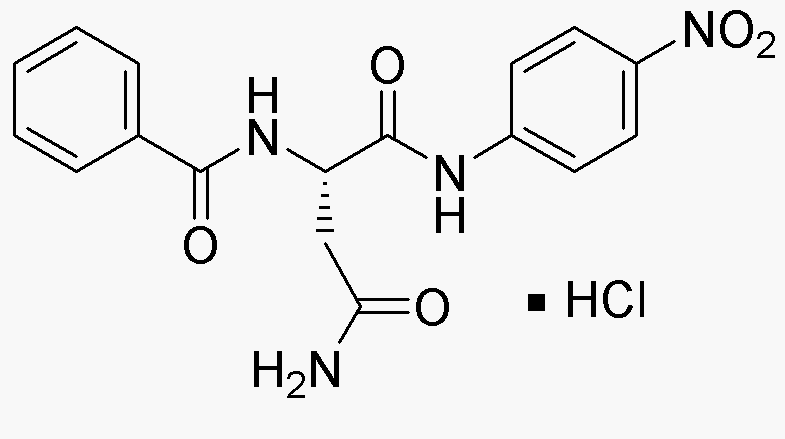Na-Benzoyl-L-asparagine 4-nitroanilide is widely utilized in research focused on:
- Biochemical Assays: This compound serves as a substrate in enzyme assays, particularly for studying proteases, allowing researchers to measure enzyme activity effectively.
- Drug Development: It plays a role in the synthesis of potential pharmaceutical agents, aiding in the discovery of new drugs targeting various diseases.
- Protein Interaction Studies: The compound is valuable in probing protein-ligand interactions, helping scientists understand molecular mechanisms in biological systems.
- Analytical Chemistry: It is used as a standard in chromatographic techniques, ensuring accurate identification and quantification of similar compounds in complex mixtures.
- Educational Purposes: This chemical is often employed in academic laboratories to teach students about organic synthesis and reaction mechanisms, enhancing their practical skills.
General Information
Properties
Safety and Regulations
Applications
Na-Benzoyl-L-asparagine 4-nitroanilide is widely utilized in research focused on:
- Biochemical Assays: This compound serves as a substrate in enzyme assays, particularly for studying proteases, allowing researchers to measure enzyme activity effectively.
- Drug Development: It plays a role in the synthesis of potential pharmaceutical agents, aiding in the discovery of new drugs targeting various diseases.
- Protein Interaction Studies: The compound is valuable in probing protein-ligand interactions, helping scientists understand molecular mechanisms in biological systems.
- Analytical Chemistry: It is used as a standard in chromatographic techniques, ensuring accurate identification and quantification of similar compounds in complex mixtures.
- Educational Purposes: This chemical is often employed in academic laboratories to teach students about organic synthesis and reaction mechanisms, enhancing their practical skills.
Documents
Safety Data Sheets (SDS)
The SDS provides comprehensive safety information on handling, storage, and disposal of the product.
Product Specification (PS)
The PS provides a comprehensive breakdown of the product’s properties, including chemical composition, physical state, purity, and storage requirements. It also details acceptable quality ranges and the product's intended applications.
Certificates of Analysis (COA)
Search for Certificates of Analysis (COA) by entering the products Lot Number. Lot and Batch Numbers can be found on a product’s label following the words ‘Lot’ or ‘Batch’.
*Catalog Number
*Lot Number
Certificates Of Origin (COO)
This COO confirms the country where the product was manufactured, and also details the materials and components used in it and whether it is derived from natural, synthetic, or other specific sources. This certificate may be required for customs, trade, and regulatory compliance.
*Catalog Number
*Lot Number
Safety Data Sheets (SDS)
The SDS provides comprehensive safety information on handling, storage, and disposal of the product.
DownloadProduct Specification (PS)
The PS provides a comprehensive breakdown of the product’s properties, including chemical composition, physical state, purity, and storage requirements. It also details acceptable quality ranges and the product's intended applications.
DownloadCertificates of Analysis (COA)
Search for Certificates of Analysis (COA) by entering the products Lot Number. Lot and Batch Numbers can be found on a product’s label following the words ‘Lot’ or ‘Batch’.
*Catalog Number
*Lot Number
Certificates Of Origin (COO)
This COO confirms the country where the product was manufactured, and also details the materials and components used in it and whether it is derived from natural, synthetic, or other specific sources. This certificate may be required for customs, trade, and regulatory compliance.


